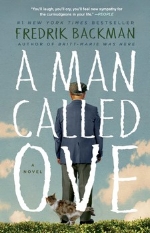Searching for Sylvie Lee Jean Kwok (2019)
Jean Kwok sets up a tantalizing mystery while at the same time constructing a moving story about an immigrant family in today’s highly mobile global economy.
The mystery: Successful 30-something New Yorker Sylvie Lee has disappeared on a trip to the Netherlands to visit her dying grandmother. Her younger sister, Amy, flies to Amsterdam to look for her. This mystery component keeps the pages turning as chapters skip back and forth in time, presenting alternating narrators.
The immigrant family: Originally from China, the extended Lee and Tan families emigrated to the Netherlands and to the United States more than a quarter century ago. Members of the younger generation are assimilated and fluent in multiple languages but still face bigotry in both countries. As one Chinese American character puts it, “I think that wherever you are, to live in the world as a white person is a completely different experience than a person of color. Discrimination is invisible to them because it does not affect them. They are truly shocked.” (227)
The dual settings (Amsterdam and NYC) add a layer of interest, since the attitudes toward immigrants have both similarities and differences. Social class is another factor. Even though Sylvie attended all the right schools and landed high-paying jobs, she laments, “I never mastered the art of the graceful shrug, the careless indifference of those who summered on private islands and tied clove hitches on sailboats.” (198)
I found the syntax and word choice in this novel particularly arresting. With each chapter, the language changes to suit the narrator of that chapter. So, when Ma, the mother of Sylvie and Amy, narrates, the sentences are shorter, with nouns often lacking articles, because Ma speaks very little English. The invoking of proverbs—such as “Those who wish to eat honey must suffer the sting of the bees” (198)—also varies. Ma’s narrative is chock full of traditional sayings, but the more Westernized Sylvie and Amy cite proverbs somewhat less often. The characters whose native language is Dutch speak in sentences that mimic the patterns of that language. Of course, we’re reading the words of fictional Dutch speakers, who are speaking Dutch that has been “translated” by Jean Kwok into English.
The fine character development in Searching for Sylvie Lee overshadows any deficiencies in the plot department, so I won’t downgrade the novel for its few melodramatic twists. In the end, Amy concludes: “How my knowledge of Sylvie, of Ma, of myself has changed. We had all been hidden behind the curtain of language and culture: from each other, from ourselves. I have learned that though the curtains in the Netherlands are always open, there is much that can be concealed in broad daylight.” (312)
For reviews of other fiction about immigrants, click on Immigrant Stories in the Archive column on the right. For another novel that combines mystery with the immigrant experience, see my post reviewing The Other Americans by Laila Lalami.
























